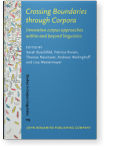Chapter 8
Short-term diachronic and variety-internal approaches to textual functionality in South Asian
Englishes
Evidence from newspaper language
To empirically trace functional characteristics of texts such as speaker/writer involvement, narrativity or
persuasiveness with a view to potential (a) intra-national variability in Indian English and (b) short-term diachronic
change in South Asian Englishes, the South Asian Varieties of English (SAVE) corpus,
its updated version SAVE2020, and the Corpus of Regional Indian Newspaper Englishes
(CORINNE) are subjected to Multidimensional Analysis (MDA, Biber 1988) as implemented in Nini (2019). A hierarchical
cluster analysis of the respective MDA scores reveals the tendency of mesolectal Indian Englishes as well as
acrolectal Bangladeshi and Sri Lankan English to employ features of a conceptually written nature more readily than
acrolectal Indian, Maldivian, Nepali, and Pakistani English. Still, in the observed time span of 15 years, the
acrolects of South Asian Englishes also develop towards conceptually written language.
Article outline
- 1.Introduction
- 2.South Asian Englishes: Uniformity and plurality
- 3.Regional variation in newspaper language
- 4.Corpora and methods
- 5.Results
- 6.Discussion
- 7.Conclusion
-
Notes
-
References
